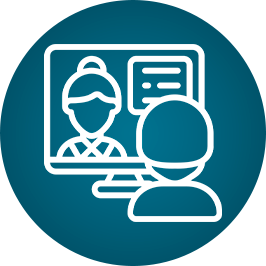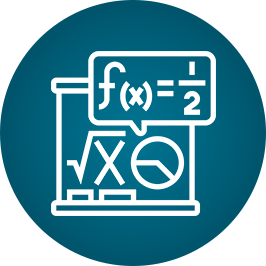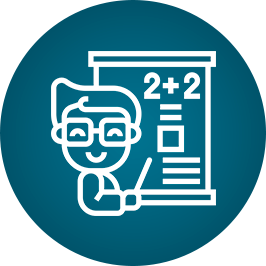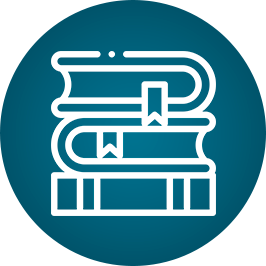Our Online Math & Statistics Tutoring Services
Explore our flexible online tutoring services in math and statistics. Customized 1-on-1 sessions, homework help, exam prep, and more — all tailored to your needs.
Services
Services
Our Services Designed for You
At All Levels, we believe that learning mathematics and statistics can be a rewarding experience. That’s why we’ve designed a wide range of services to meet your specific needs and help you overcome fear and feel confident in these subjects.
From one-on-one tutoring to support materials and specialized workshops, we’re here to support you every step of the way in your learning process.


Online tutoring in mathematics and statistics.
The tutoring sessions are conducted as a two-ways exchange of ideas and practice, aiming to gain understanding on a topic or to solve a problem.
In a typical tutoring session the student has a question requiring some work to understand or solve, asking the tutor for help, the tutor is not just answering the question, instead, the tutor asks question to student about his/her attempts to solve the problem, providing hints, suggestions, questions, aimed to fix mistakes and provide guided paths to solutions.
Sometimes work done by student is clear, clean, ordered, readable, so it is easy for tutor and student to identify mistakes and fix them.
Other times work done by student has a wrong step, maybe a minor mistake or a not-so-minor mistake that involves a mislearned concept or method, in this case, depending on the situation, tutor may ask for justification of step, derive an absurd or doing scaffolding.
Other tutoring approach is when student needs a class, meaning, a detailed explanation of a topic, usually involving a concept, examples, problems, and methods of solving. In this case, after or during the explanation, short questions may be asked to test for understanding.
The main goal and approach of tutoring is that working in a problem, concept, or procedure is regarding not only to the current situation, but state milestones for more general/future questions.
On the tutoring process we follow a Problem Solving Approach, which we detail below:

Problem Solving APPROACH.
Our approach can be described briefly as a flexible process in few steps:
1) Read carefully the question, this involves to identify what is given and what is asked to do. Fail to observe this, often leads to huge mistakes, absurd statements, and even good or acceptable work on answering a not asked question.
2) Rewrite the question (if apply). Use symbols, equations, variables, graphs, and diagrams. Particular attention requires the work with the called word problems.
3) Make a plan of action. A brief note describing steps to perform and partial results to accomplish can make the difference between a neat process and a trip to nowhere.
4) Execute the plan. This is often the most visible part of the process and sadly, many times attempted with deficient or absent reading and planning.
5) Review the plan on the fly. To check some steps and results while you are in the way to your final answer may help at least to save time and effort.
6) Verify (as much as possible, convenient, or needed) the answers. Even if you are not asked to verify your answers, it can be the last opportunity to detect and fix a mistake before submitting a wrong answer.
7) Behind and Beyond the Question (BBQ). After getting our final answer, we may try and get many learnings and satisfactions from discussion or meditation on the solved problem. This is the place to find and discover generalizations, special cases, counterexamples, application to solve problems in different subjects.
These steps are not a rigid path to follow and usually some steps may be switched, omitted or repeated.

Workshops on Problem Solving (WPS)
WPS are designed for various levels of competency, using knowledge of current or past approved courses to deal with content at different stages of problem solving process.
Currently on development.

Books with Exercises and Study Guides.
For a selection of topics detected of needing particular attention we design booklets with a brief summary of knowledge facts, a formula sheet, and a set of more than 100 questions with answers and proprietary method of record and check the answers, by using a quote.

Diagnostic Tests.
Diagnostic Tests are designed to assess level of competency for entering grades 4, 7, 10, or specific courses like algebra, calculus, and statistics.
Due to diversity of content for similar courses in different colleges / countries, the Diagnostic Tests will be sometimes prepared on demand, after student request it, and collecting information about previous conditions to begin.

Workshops for Teachers and Parents.
Currently on development.

Mini Courses
Now, why it would be convenient for you to take the courses below? Currently, there are some careers on high demand, Data Analysis, Data Scientists and Artificial Intelligence. All of them have something in common: a strong component of Math and Statistics, which we offer to you through the following courses.
- Algebra.
- Calculus.
- Introduction to Applied Statistics.
- How to pick a Stat Method.

How can we help you on the math and statistic foundation you need in high demand jobs today.



